Cactus flower extravaganza in pink, orange, and red
Yesterday, I went on a field trip with the Sacramento Cactus and Succulent Society to Poot's Cactus Nursery in Ripon near Modesto (post to come). Afterwards, we visited Elton Roberts who lives nearby. Elton is a legend in cactus circles. He has been growing cacti for almost 70 years and has been sharing his wealth of knowledge in countless articles in succulent journals. He has done pioneering work on watering cacti with acidified water; this article details his practice. For more general growing advice from Elton, check out this handy writeup.
Elton has an entire greenhouse full of cacti for sale, and I bought a handful of echinocereus uncommon in cultivation (see photo at the end of this post). But what really got me excited was the floral extravaganza on an outside table: cacti flowering their fool heads off in shades of pink, red, and orange. I could tell that they were claret cups (Echinocereus), but I didn't know which species. I asked Elton, and his answer blew my mind. They're all the same species, Echinocereus coccineus!
Commonly known as the scarlet hedgehog, the scarlet beehive cactus, or the needle-spined claret cup, Echinocereus coccineus is found in a wide range encompassing southern Arizona, most of New Mexico, a small part of Colorado, and the Big Bend area of West Texas. Elton grew his from seed many years ago, and the different flower colors are natural variation. It's purely a numbers game: the more seedlings you have, the higher the odds of finding something extraordinary.
- Echinocereus durangensis
- Echinocereus fendleri ssp. hempelii
- Echinocereus klapperi
- Echinocereus pulchellus ssp. acanthosetus
- Echinocereus stoloniferus
- Escobaria vivipara ssp. kaibabensis
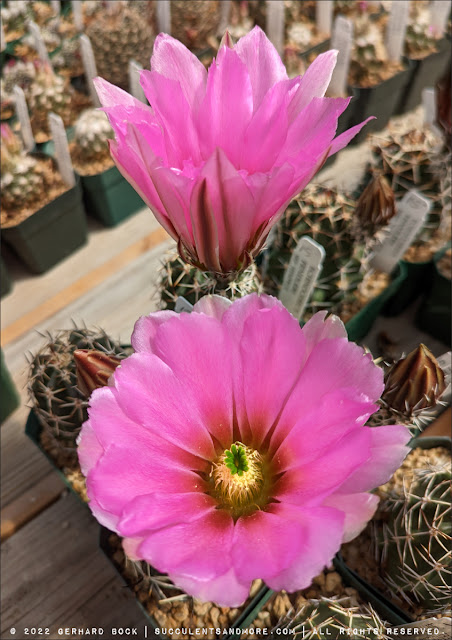 |
| Echinocereus fendleri ssp. hempelii flowering inside Elton's greenhouse. I bought one with a flower bud that hasn't opened yet. |

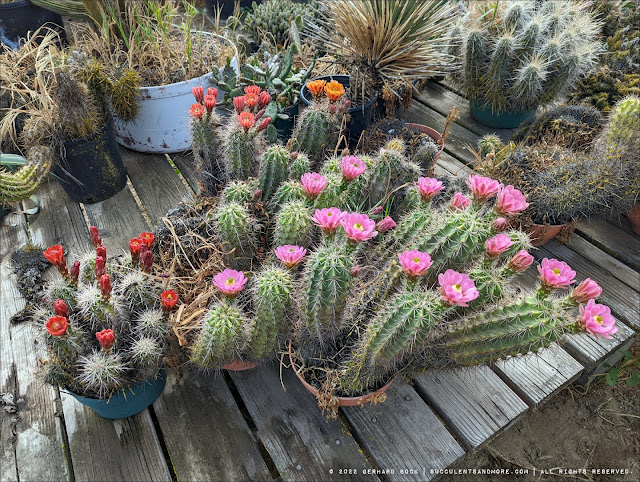
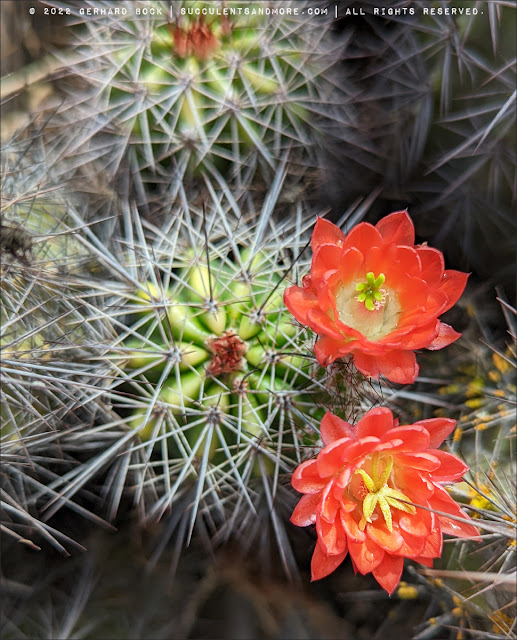



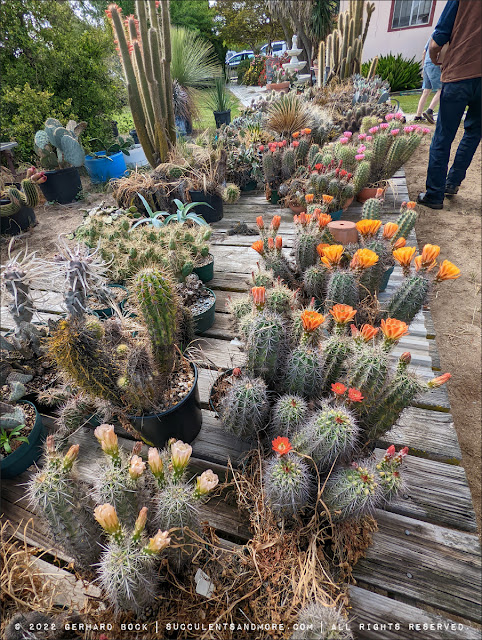











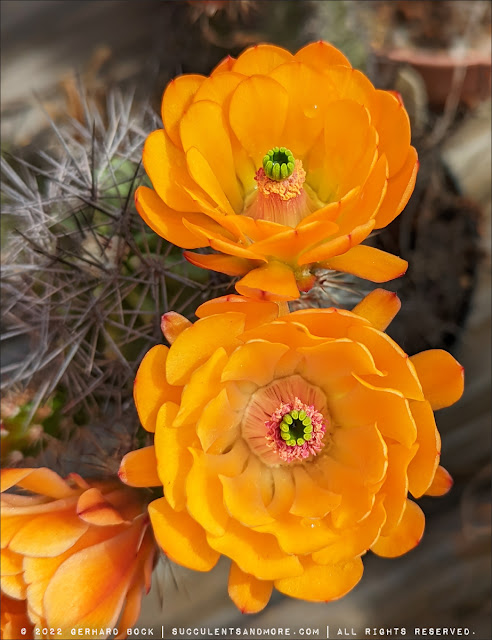

Gorgeous colours. The pink one with its pale green centre is perfection. You say you snapped these pics with your….phone? Amazing quality if so.
ReplyDeleteYes, my phone (Google Pixel 6). Phone cameras are getting better and better--and for closeups, I actually prefer my phone over my Sony DSLR.
DeleteWow! I can imagine that was a great way to spend a Saturday. Thanks for sharing Elton Roberts articles.
ReplyDeleteBecause of Covid, it had been four years since I'd last been there!
DeleteI love Echinocereus coccineus because it is native in Arizona and it does last 3-5 days (depending on the heat in the Sonoran Desert!) I have other species as well and they are terrific too. The flowers are big too!
ReplyDeleteYessss, great cactus all the way around. Echinopsis flowers are epic, but so short-lived. I'll take Echinocereus coccineus, triglochidiatus, etc. any day.
DeleteI too love the orange best of all, so I wonder? Why didn't you buy any orange flowering?
ReplyDeleteI would have loved to, but no orange-flowering Echinocereus were available.
Delete